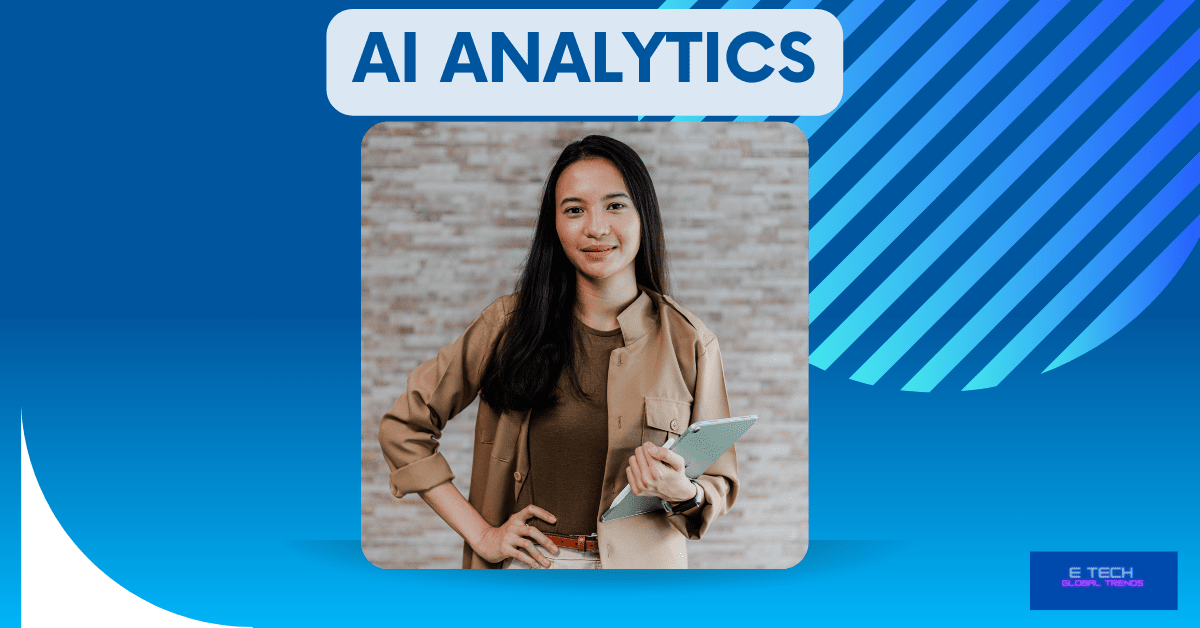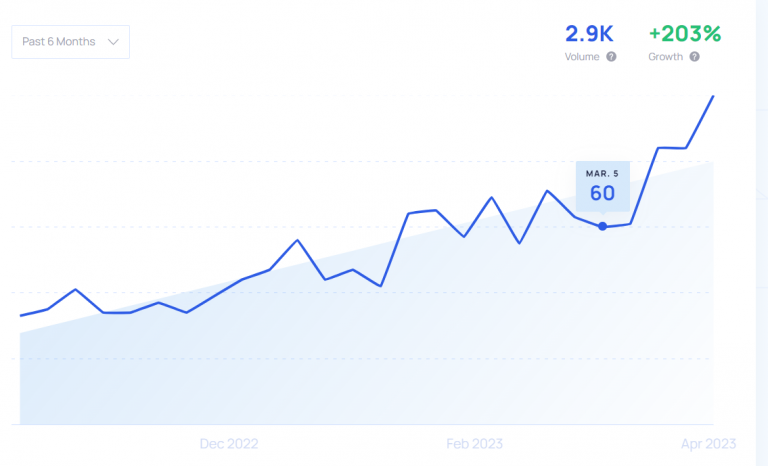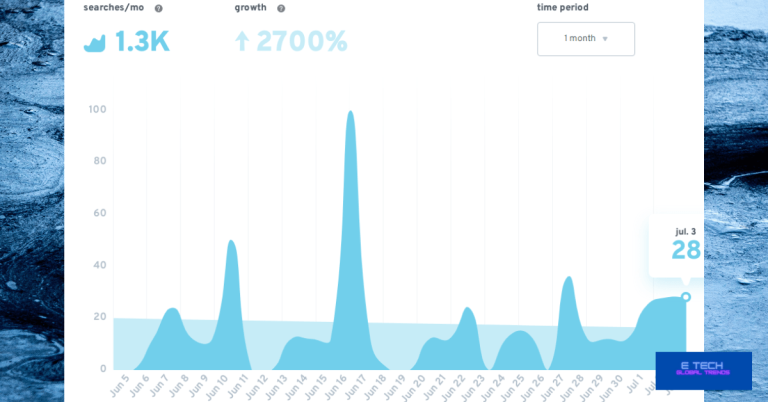AI analytics
Have you ever noticed this business tech? AI analytics may change everything into business growth. Software using artificial intelligence is used in business to find trends and insights. not only that. Many advantages may be achieved. Let’s see how!
Firstly, shall we certify the technology and terms?
What is AI analytics?
The technique of applying intelligent analysis to unprocessed data is known as AI analytics.
The objective is to use-
- Machine learning,
- Deep learning, and
- NLP-(natural language processing)
to extract insight from unstructured text or data.
You may have observed this in the form of fraud detection and predictive modeling, but the outcome might offer knowledge from multiple sources.
With real-time insights it can provide to improve production operations and influence changes in business processes, AI is set to be the next big thing in HPC- High-Performance Computing.
An AI tool called AI Analytics leverages machine learning to analyze enormous volumes of data. To decide what steps to take next, AI Analytics uses algorithms to find patterns in the given data.
Can AI Analytics make positive advancements in business?
Yes, it does. How?
Indeed, there are numerous ways in which AI analytics may greatly enhance enterprises.
How to do it is as follows:
Improved Decision Making:
AI can analyze large volumes of data to find patterns, trends, and anomalies that people might overlook. This makes data-driven decisions more likely to be effective for businesses
Automation and Efficiency:
AI may automate repetitive data analysis jobs, allowing human workers to concentrate on more strategic work. This lowers the possibility of mistakes and increases efficiency.
Forecasting with trends
Trends can predict future trends and client behavior through predictive analytics. Improved risk management, and proactive planning, as a result, can allocate resources wisely.
Customized Customer Experiences:
AI may examine consumer information to determine personal preferences and suggest goods and services that are most appropriate for each individual.
Higher levels of client pleasure and loyalty result from this.
Innovation and Optimization:
Artificial Intelligence has the potential to find new avenues for process optimization and innovation. Businesses may benefit from having this advantage over rivals in the market.
Well,
Can you show some realistic examples?
Sure,
the Following are a few instances from the actual world.
Retail businesses utilize AI to tailor product suggestions and enhance pricing tactics.
AI manufacturing organizations use AI to anticipate equipment breakdowns and minimize expensive downtime.
AI is used by financial institutions to control risk better and identify fraudulent transactions.
How is AI analytics used for mid-size businesses?
AI analytics has the potential to revolutionize mid-sized firms by providing a level of complexity previously only available to larger enterprises.
Here are some important ways that mid-size firms might profit from AI-powered analytics:
Improved consumer Experience:
AI can forecast behavior and comprehend preferences by analyzing consumer data. This makes it possible for companies to tailor their product recommendations, marketing messaging, and general customer interactions, which increases client happiness and loyalty.
Enhanced Efficiency and Productivity
Artificial Intelligence may automate repetitive processes, freeing up employees’ valuable time for more strategic work. AI can also improve workflows and streamline procedures, which boosts production and efficiency throughout the company.
Innovation & Competitive Advantage:
AI can spot new business prospects by analyzing competitor and market data. This gives mid-sized companies a competitive edge by enabling them to create novel goods and services or enhance already-existing ones.
Data-Driven Decision Making:
Large teams needed for data analysis are frequently unaffordable for mid-sized companies. AI finds patterns in large, complicated data sets and automates processes like report generation. This enables companies to reach data-driven decisions in every division, from operations to marketing.
Scalability:
Pay-as-you-go AI solutions can frequently be deployed, giving mid-sized companies on a tight budget access to them.
AI can also assist companies in growing their operations without incurring corresponding increases in expenditures.
As a whole, AI analytics gives mid-sized organizations a strong tool to fight with larger enterprises. Mid-sized firms may increase productivity, boost customer satisfaction, and spur growth by utilizing AI to extract insights from data, automate processes, and make data-driven choices.
Let’s move on to a critical part of this discussion.
10 best ways to get used to AI Analytics?
Of course! This is a detailed how-to guide for introducing AI analytics.
No: 01 Establish Your Goals:
Establish the precise objectives you hope to accomplish with AI analytics. Your analytics initiatives will be guided by well-defined objectives, whether they are related to;
- Revenue growth,
- Customer experience enhancement, or
- Operational optimization.
No:02 Determine the Sources of Data:
Determine which internal sources of information are pertinent.
This could be data from Internet of Things devices, written documents, databases, or even unstructured data.
Make sure the data you need for analysis is available to you.
No:03 Data Cleaning and Preparation:
Make sure your data is consistent and clean by cleaning and preprocessing it. This could entail managing missing values, standardizing formats, and eliminating duplication.
A thorough preparation of the data is essential for accurate analysis.
No:04 Selecting Tools for AI Analytics:
Make sure the AI analytics tools you choose meet your goals and data needs.
Numerous technologies are available, from commercial offerings like IBM Watson & Microsoft Azure AI to open-source platforms like TensorFlow & PyTorch.
No: 05 Choose a Model:
Select the AI models that are right for your analytics projects.
- For classification or regression issues, this could entail supervised learning;
- For clustering or anomaly detection, unsupervised learning; and
- For optimization tasks, reinforcement learning.
No:06 The AI Models’ Training:
Make use of past data to train the AI models you have chosen. This entails feeding the models with the data and modifying their parameters to maximize output or reduce error. This stage could need a substantial amount of computer power, depending on the size of the data and the degree of complexity of the models.
No: 07 Evaluation and Validation
Utilizing validation data, assess how well your trained models function. This makes it more likely that the models will produce precise forecasts or insights and will generalize effectively to new data. Continue training and evaluating the model iteratively until the model performs well enough.
No: 08 Connectivity- integration to business operation
Incorporate the AI analytics findings into the operational procedures of your company.
This might include using AI-driven insights into decision-making workflows, automating repetitive tasks according to AI recommendations, or integrating predictive models into production systems.
No: 09 Continuous observation and development
Keep an eye on the functioning of your AI analytics tools while they’re in use. This entails monitoring important indicators, spotting shifts in the data distribution or model performance, including retraining the models as necessary to adjust to novel information or evolving conditions.
No: 10 Feedback Cycle- repeat the procedure
Create a feedback loop so that the operations and strategy of your company can benefit from the insights gathered via AI analytics. This guarantees that the analytics initiatives generate real company value and support continuous innovation and development.
These methods will help you use AI analytics to your advantage. so, that you may;
- Make data-driven decisions,
- Obtain insightful information, and
- Accomplish your business goals.
In this way, you can absolutely make it happen.
So, let’s think of popular methods.
What are the well-performing AI Analytics tools in the software market?
The environment of AI analytics provides a range of tools to meet various objectives. Here are a few formidable competitors in a range of categories:
1.0 Startup-like purpose analytics
Tableau & Microsoft Power BI are well-liked options for exploring and visualizing data. They eliminate the need for complex coding by enabling users to generate interactive dashboards and reports.
Polymer‘s AI-powered solution makes data transformation easier and offers a user-friendly interface for exploring and analyzing data.
2.0 AI Automation
With AnswerRocket’s AI-powered natural language responses to business inquiries, people who need more technical knowledge to obtain insights more quickly.
Even for people without much coding knowledge, Google Cloud AutoML offers an intuitive interface that makes it easier to create unique machine-learning models.
3.0 Solutions tailored to a specific industry
Salesforce Einstein Analytics serves as a CRM-specific tool that uses artificial intelligence to analyze sales data.
Digital marketing efforts are optimized by Albert.ai using AI, providing real-time recommendations and insights.
With data-driven analysis, Outranking.io is an artificial intelligence platform that helps websites rank higher in search results.
Last Thoughts Now…
Are you ready to use AI analytics?
Recall that the ideal instrument will rely on your unique requirements.
Think about things like,
1.0 Your proficiency with technology:
While some programs have user-friendly interfaces, others require knowledge of coding.
2.0 Size and complexity of the data:
Some tools work better with larger datasets.
Industry and use case: Solutions specific to marketing, sales, finance, and other areas are available.
Before choosing a tool, it is advised to do some research and even try out demos.
Summary
All things considered, AI analytics is a potent instrument that firms can use to spur innovation, automate processes, enhance decision-making, and customize customer experiences. We should anticipate seeing even more applications of AI technology to boost corporate performance as it advances.
Hope this content helps.
Cheers!
Read more on related topics here; MS PowerBI, Business Analytics







